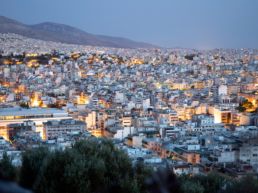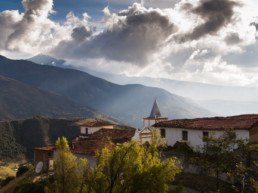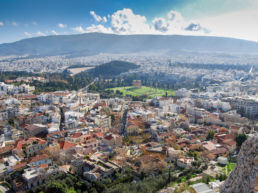Greek mythology is full of stories about Zeus and the 12 Olympian Gods, creatures that were half men and half animal and heroes such as Odysseus and Hercules. In several museums around Athens, you’ll find vases and other artifacts from antiquity painted with mythological figures or even whole scenes from the stories ancient Greeks narrated. The real magic though begins if you visit the actual places and archaeological sites referred in myths that date millions of years ago.
Mount Olympus
Around 50 miles (80 kilometers) southwest from Thessaloniki, on the border between Thessaly and Macedonia, spans Mount Olympus the highest mountain in Greece. According to Greek mythology, the summit of the mountain was the home of the 12 gods and goddesses ancient Greeks used to worship. From up here, Deus along with his wife Hera and their children were observing humans and devise their plans. Being one of the most beautiful national parks in Greece, nowadays Mount Olympus is a populous spot for hiking and climbing.
The Temple of Poseidon
Located at Sounion, the Temple of Poseidon is just a short jaunt from Athens‘ city center. Built in the Golden Age of Athens (around 444 BC) this historic temple is one of the most impressive archaeological sites in the country nowadays. The sea has always played an important role in Greek history and locals held ceremonies and rituals before they embark on a ship journey. Hence comes as no wonder the notable statesman Pericles built a temple in honor of the God of the Sea, Poseidon. Perched on the top of a cliff 200 feet (60 meters) above sea level, the Temple of Poseidon offers a unique view over the sea which makes it one of the top destinations for a one-day trip from Athens. Dozens of tour operators organize archaeological tours by day or at sunset while the surrounding area is a hotspot for yoga lovers.
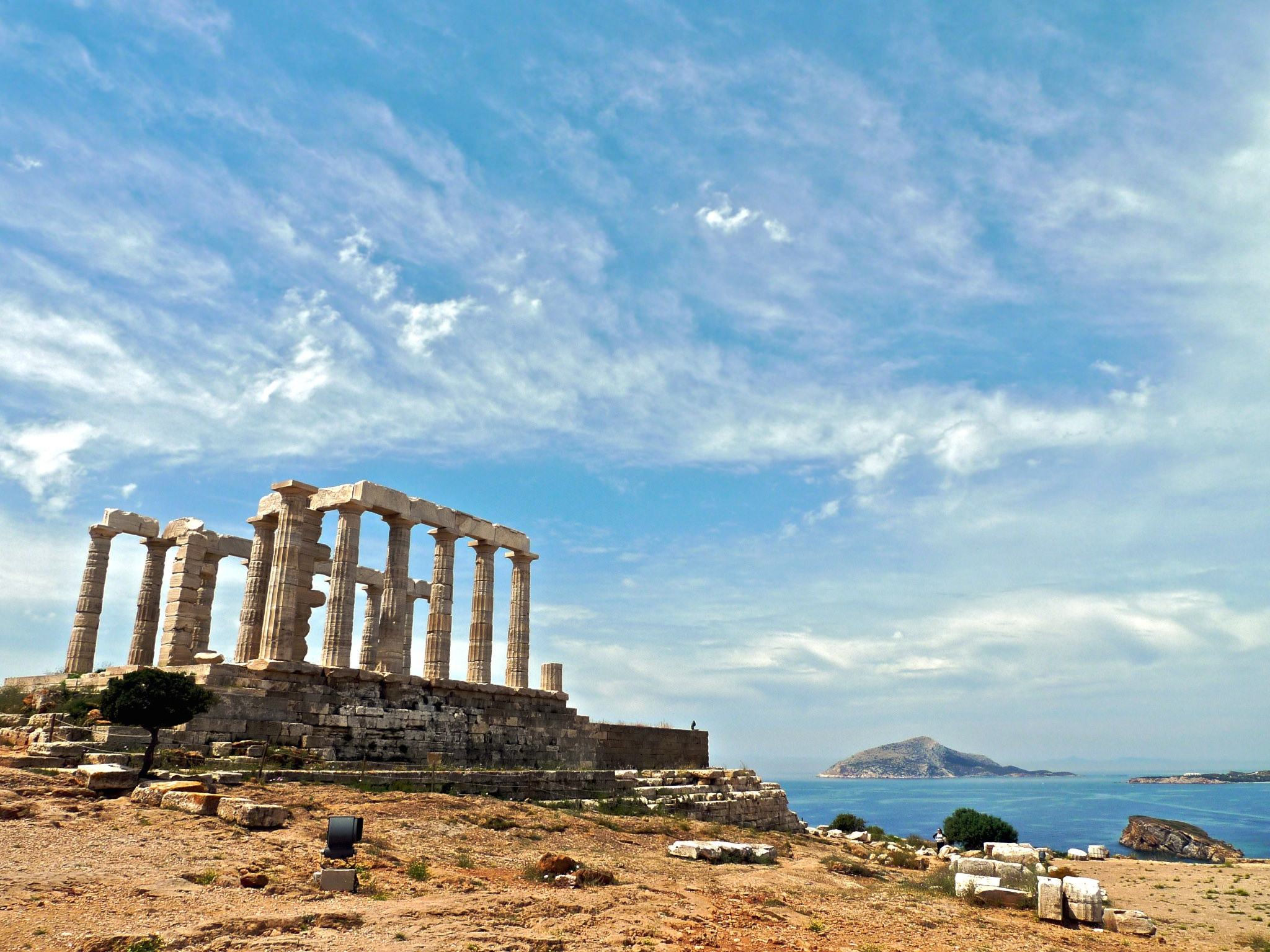
Delos Island
Delos is a small island in the Aegean sea known nowadays for its beautiful beaches and serene landscape. For ancient Greeks though, it was the most sacred of all islands because it was there that Apollo and Artemis were born. According to the myth, Letos, one of Zeus’ many secret lovers came to the island to give birth to her children in order to hide from Hera. Ruins of some of the temples that ancient Greeks built in honor of the twin gods still stand on the island’s hillsides making it one of the top destination for those who want to see Greek mythology coming into life. Delos has been designated as a UNESCO World Heritage Site since 1990.
Ideon Cave (Cave of Zeus)
Nestled on the east side of Mount Ida, Crete’s highest mountain, Ideon Cave can almost persuade visitors that Deus, the King of Gods was raised here. If you aren’t familiar with Greek mythology you’re probably wondering how come and the King of Gods spent his early years in a dark cave. Legend has it that Cronus, Deus’ father used to eat his children so they wouldn’t overthrow him from the throne. In order to protect Deus, his mother Rhea decided to hide the infant in Ideon Cave until he came of age to confront his father. Nymph Melissa and the goat Amalthea took care of the baby and made sure to keep Rhea’s secret safe. When Deus was old enough, he went out to the world and as the prophecy had predicted, he overthrew Cronus. The cave was a sacred place for ancient Greeks and it is said that several ceremonies took place in the cave including Plato’s and Pythagoras’ initiations.
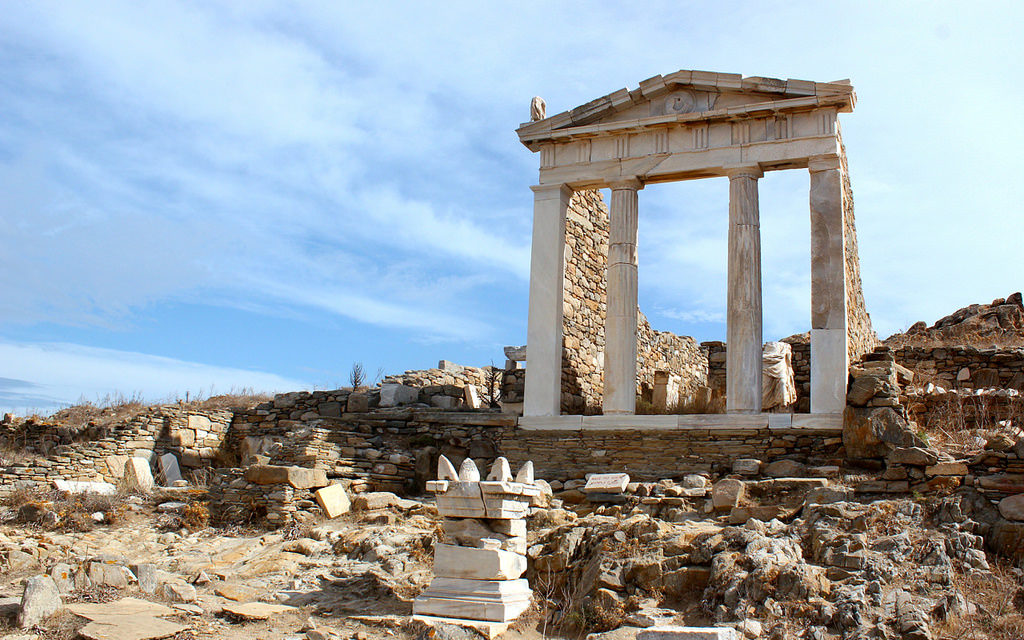
Ithaca
Ithaca, one of the most beautiful islands in the Ionian Sea is considered to be Odysseus’ home. In his epic poem Odyssey, Homer narrates Odysseus’ 10-year journey back to Ithaca after the end of Trojan War. Even though nowadays, the sun-soaked beaches attract the crowds’ attention, there are a couple of archaeological sites bearing testimony that the island is strongly connected to Greek mythology. The Cave of Nymphs is according to Homer’s Odyssey the place the King of Ithaca had hidden the gifts he brought from Phaeacia. The mesmerizing place is nowadays a popular diving spot. In the north side of the island stand the ruins of what is believed to be Homers School.
Acheron River
While nowadays, locals and tourists visit Acheron River for rafting, horse riding and other outdoor activities, ancient Greeks were probably steering clear from visiting this place. Because in Greek Mythology, Acheron River was one of the 5 rivers that led to the Underworld and the only one that is actually flowing on the country’s mainland. Close to the river lay the ruins of Necromanteion which translates to “Oracle of the Dead” and used to be a temple devoted to Hades and Persephone. Looking at the breathtaking green landscape surrounding Acheron River it comes as wonder why ancient Greeks linked it with the Gods of death. But then again, in Greek mythology heroes used to travel to the Underworld and return back to life quite often.
Knossos and minotaur
The ruins of Knossos have for thousands of years been standing on the island of Crete reminding visitors the power and wealth of the Minoan civilization which flourished from around 2700 BC to 1450 BC. But for ancient Greeks Knossos was the city the notorious Minotaur lived. Minotaur was an ugly creature with the head of a bull and body of a human. His father Minos asked Daedalus to build a labyrinth to put the monstrous creature inside and he sent his enemies in the labyrinth to confront him. Dozens of myths have been written about the people that entered the labyrinth and never managed to escape. Minotaur was finally killed by Theseus, the son of Aegeus. He, of course, had a bit of help from Minos’ daughter Ariadne who was in love with him and gave him a ball of thread to help him find his way back to the exit of the labyrinth.
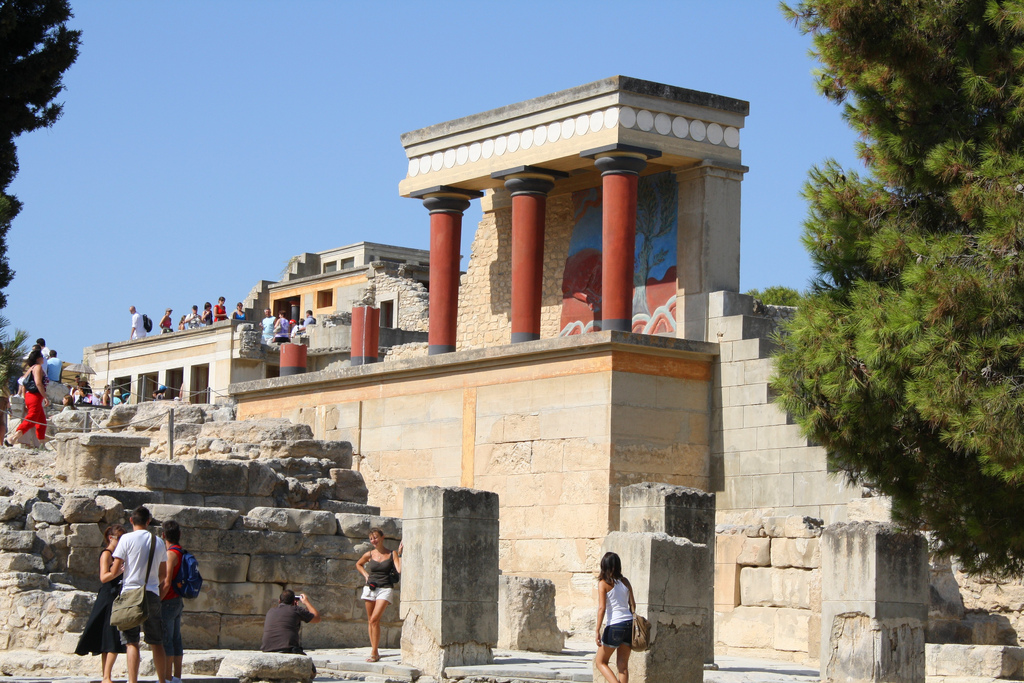
See Mythology Coming to Life at this Places around Greece photos courtesy of Petroskaz / Wikimedia Commons, Kandukuru Nagarjun / Flick, Andrew Skudder / Flickr, Konstantinos Georgiou / Flickr
Make your next trip the best one.
Departful is a full service travel agency creating truly exceptional travel experiences that are 100% personalized to you. Wherever you’re going, whatever your interests, we help you plan the perfect trip.
Aliki Seferou
When she doesn't have her headphones on, Aliki likes to talk about cinema, the peculiar stories she has experienced during her various travels around the world, and her desperate attempts to capture landscapes and people with her lens. Originally from Athens, Greece, Aliki moved to Copenhagen to find out if Denmark is actually the happiest nation in the world (still looking into it) and at the same time study Film and Media.


